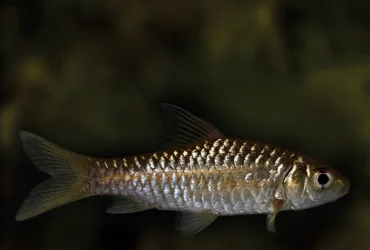Volume 2 | Number 1 | May 2010
 v2i1.23
v2i1.23ISSN: 1800-427X (print)
eISSN: 1800-427X (online)
DOI:10.47605/tapro.v2i1.23
Published date: 30 December 2010
Pp. 1–5
EDITORIAL : Taxonomy in the century of extinctions : taxonomic gap, taxonomic impediment, taxonomic urgency
Alain Dubois
Section Editor: Taprobanica, the journal of Asian Biodiversity
Our knowledge of the living species of the earth is still dramatically incomplete. Actually, few domains of scientific knowledge are in such an unsatisfying situation. Taxonomists have so far described less than 2 million species, whereas, using various methods, the total number of species was estimated to at least 7–8 million, but perhaps 10, 50, 100 million or even more. This huge taxonomic gap is both quantitative and qualitative, as very little is known of most of the species that have been “described” and named so far. If the work of increment of our database on specific diversity continued at the same pace as in the past, centuries would be necessary to complete our inventory of the planet’s species. However, time is pressing, because of the biodiversity crisis. The aggressions of the biosphere by our civilisation result in a drastic destruction and disappearance of natural ecosystems and, combined with other threats (physico-chemical and biotic pollution, over-exploitation by man, etc.), entail mass extinctions of species which will be irreversible. Many of the species that are currently disappearing with the forests, aquatic and other habitats that harboured them, will carry away forever with them not only molecules or other inventions of life that could have been useful to medicine, agronomy or other human needs, but also a plethora of irreplaceable information on biodiversity, evolution, adaptation and innovations, not to mention their aesthetic and cultural value. No serious hope exists to really stop or even significantly reduce the destructions on hand, as they are due both to human demographic growth and to the destructive kind of relations our current societies have with their environment, two factors that are not likely to change in the coming decades.
eISSN: 1800-427X (online)
DOI:10.47605/tapro.v2i1.23
Published date: 30 December 2010
Pp. 1–5
EDITORIAL : Taxonomy in the century of extinctions : taxonomic gap, taxonomic impediment, taxonomic urgency
Alain Dubois
Section Editor: Taprobanica, the journal of Asian Biodiversity
Our knowledge of the living species of the earth is still dramatically incomplete. Actually, few domains of scientific knowledge are in such an unsatisfying situation. Taxonomists have so far described less than 2 million species, whereas, using various methods, the total number of species was estimated to at least 7–8 million, but perhaps 10, 50, 100 million or even more. This huge taxonomic gap is both quantitative and qualitative, as very little is known of most of the species that have been “described” and named so far. If the work of increment of our database on specific diversity continued at the same pace as in the past, centuries would be necessary to complete our inventory of the planet’s species. However, time is pressing, because of the biodiversity crisis. The aggressions of the biosphere by our civilisation result in a drastic destruction and disappearance of natural ecosystems and, combined with other threats (physico-chemical and biotic pollution, over-exploitation by man, etc.), entail mass extinctions of species which will be irreversible. Many of the species that are currently disappearing with the forests, aquatic and other habitats that harboured them, will carry away forever with them not only molecules or other inventions of life that could have been useful to medicine, agronomy or other human needs, but also a plethora of irreplaceable information on biodiversity, evolution, adaptation and innovations, not to mention their aesthetic and cultural value. No serious hope exists to really stop or even significantly reduce the destructions on hand, as they are due both to human demographic growth and to the destructive kind of relations our current societies have with their environment, two factors that are not likely to change in the coming decades.
Hubungi Kami
The ultimate aim of the journal is to provide an effective medium for communication of the latest and best scientific information.
Copyright © 2020 Taprobanica. All Rights Reserved
Jasa Pembuatan Website by IKT




